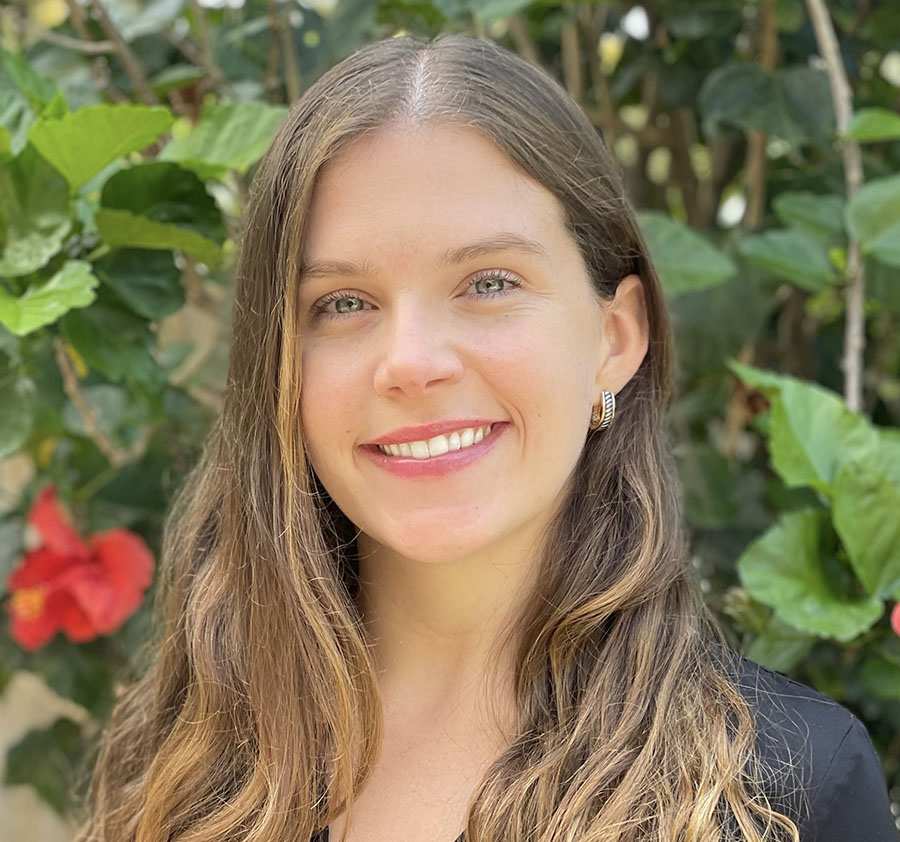 Bridget Huston
Bridget HustonBridget graduated from the University of Florida in 2016 with her B.S in Biology and a Minor in Wildlife Ecology and Conservation. Soon after graduation, she worked at a botany research facility, where she assisted with international confidential plant trials and helped maintain the ongoing work, and conservation efforts, of the Research and Development Department.
In 2018, she began pursuing her Masters in Environmental Science at FAU and began working at the Center for Environmental Studies (CES). CES’s focus on, and involvement with, local current environmental and climate issues and its intimate and passionate academic environment is what brought her to FAU. Her thesis project was devoted to characterizing and increasing resilience within Broward County communities by researching and documenting personal accounts within climate events.
I was drawn to FAU and CES due to my background in biology, where my research experience left me seeking a broader connection between environmental challenges and their societal impacts. CES’s interdisciplinary focus on the human-environment interface and its work in resilience and social sciences was particularly compelling. I was eager to engage in research that emphasized the importance of community-based adaptation and the intersection of climate science with social dynamics.
I earned two Masters degrees from FAU:
My academic focus stemmed from a desire to integrate environmental science with urban and regional planning to facilitate community-driven solutions to natural hazards. I recognized the need for a strategic approach to climate adaptation, one that leverages environmental data and planning tools to create actionable pathways for municipalities to increase resilience in the face of climate risks.
At CES, I led the development of The Community Climate Resilience Project, a comprehensive longitudinal study that aimed to evaluate community resilience to environmental hazards, including flooding, hurricanes, and heat stress in Broward County. The project moved beyond standard Census-driven assessments by developing household-level surveys to capture a multidimensional view of resilience. This included factors such as social capital, institutional support, communication networks, and infrastructure stability.
I conducted quantitative and qualitative analysis using the Statistical Package for Social Sciences (SPSS) to model dynamic resilience processes within these communities, generating resilience scores that informed future preparedness strategies. Additionally, I restructured vulnerability maps in ArcGIS with a focus on sociodemographic variables, enabling more accurate risk assessment. My role also involved producing outreach materials, videos, and podcasts aimed at translating complex resilience concepts into accessible formats for diverse audiences. Collaborative efforts included partnerships with the University of Florida and the University of Louisiana, where we conducted a web-based inventory of federal and state programs for Low-Moderate-Income (LMI) populations along the Gulf Coast.
My thesis, titled “Understanding Resilience to Environmental Hazards: How a Broward County Community Assessment Helps to Complete the Picture,” involved a comprehensive analysis of community resilience through direct engagement with local populations. By conducting social surveys and workshops, I assessed perceptions of environmental risks and evaluated community capacity to respond to hazards. This research sought to integrate traditional environmental risk data with qualitative insights to provide a more holistic view of resilience, emphasizing the socio-environmental interactions at play.
One of my most impactful experiences was participating in a community charrette in Massachusetts as part of the Coastal SEES project, which examined how salt marsh ecosystems are affected by sea level rise. It was my first opportunity to facilitate large-scale community engagement on conservation and resilience. Working directly with residents, stakeholders, and other researchers to align conservation goals with community values highlighted the importance of interdisciplinary collaboration in addressing environmental challenges. This experience solidified my commitment to fieldwork and hands-on climate adaptation strategies
I am currently a Resilience Project Manager at APTIM Environmental & Infrastructure, LLC, where I lead a range of projects focused on coastal and urban resilience. My responsibilities include conducting vulnerability and risk assessments, climate modeling, and adaptation strategy development for municipalities across Florida. I also contribute to the integration of resilience initiatives into capital improvement planning and policy frameworks. Notable projects include the Florida Department of Environmental Protection’s 2024 Adaptation Planning Guidebook update and various climate vulnerability studies aligned with Florida Statutes 380.093. My work also involves facilitating stakeholder engagement through workshops and public outreach, managing cross-sector collaborations, and producing technical reports. I oversee the development of sustainability plans, including greenhouse gas inventories, and lead proposal writing for resilience-focused planning and adaptation projects.
I would advise students to explore the full spectrum of environmental science and resilience planning. This field is highly interdisciplinary, encompassing everything from research and data analysis to community engagement, engineering, and policy development. Each of these dimensions is critical in addressing the multifaceted challenges of climate adaptation, so it’s important to find the niche that resonates with you. Whether your interest lies in technical modeling, public policy, or community-driven solutions, there is a pressing need for skilled professionals in this evolving field.
In my spare time, I enjoy practicing yoga, cooking, attending live music events, and watching movies. I also love going on outdoor walks and traveling whenever I can.